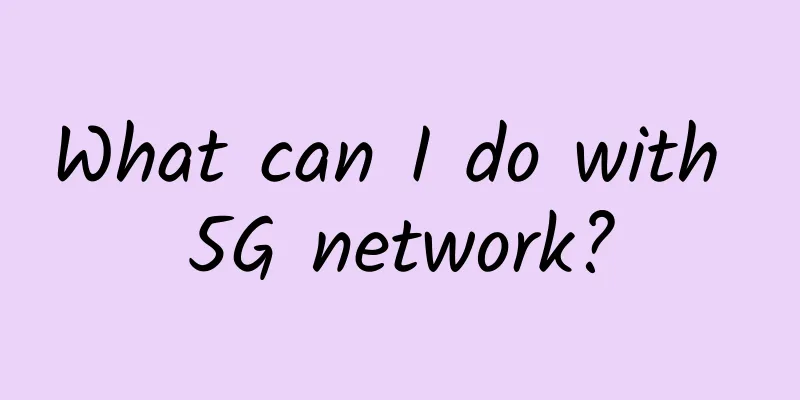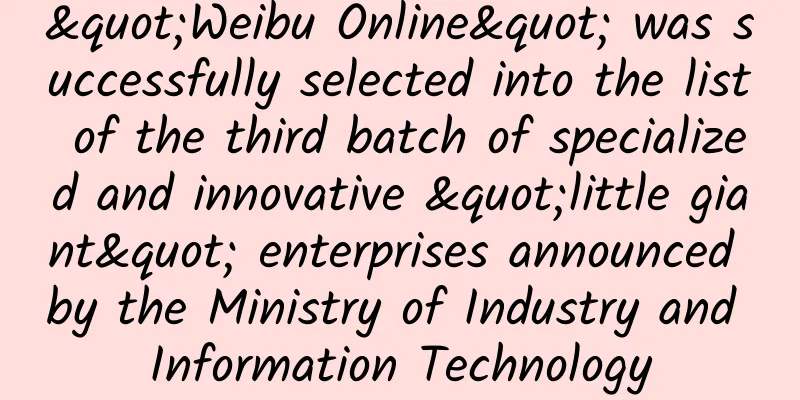What can I do with 5G network?

|
Some people say that 4G is enough and there is no need for 5G, and some even imply that 4G is not even needed. This statement is actually untenable. The main basis for saying this is that "3G/4G was extremely fast when it first came out", but they completely fail to understand that the "speed" of 3G/4G in the initial experience was based on the premise that the capacity did not reach the upper limit.
The 4G frequency band inherently limits the upper limit of the data flow that a 4G base station can carry. Under the premise of promising a single-connection bandwidth experience, the base station can only connect to a specific number of clients. Depending on the difference between busy and idle times, this number can be slightly adjusted to be slightly higher than the total bandwidth limit and the divisor of the single-connection promised bandwidth, but after all, the frequency band limitation determines that this upper limit is very low. The radiation range of a 4G base station is several times larger than that of a 5G base station, and its potential connection demand is greater. Considering that its total bandwidth is much narrower, this results in a 4G base station load that is much greater than that of a 5G base station. I am already weak, but I have to move more bricks. How heavy can each brick be? Mobile phones need to be connected, watches need to be connected, computers need to be connected, tablets need to be connected, cars need to be connected, surveillance cameras need to be connected... Once the number of connections approaches saturation, the base station will have to allocate bandwidth - since there are too many people, everyone has to use less. The number of connections has exceeded the limit. Do you think 4G is fast? Some people also say that "4G is redundant, 3G is fast enough", and they are making the same mistake. The capacity limit of 3G base stations is lower than that of 4G base stations, and the problem of connection overload is more serious. Of course it's fast when there are only one or two million users. How about trying it with 100 million users? In fact, you have misunderstood the logic of telecom operations. In telecom operations, every time the network is upgraded, increasing the bandwidth of a single customer is not the goal, but increasing the number of users on the network is the real goal. Slightly increasing the bandwidth of a single customer is just to increase the willingness of users to join the network. In fact, for the same bandwidth capacity, telecom operators obviously prefer to allocate it to as many (monthly traffic) users as possible, rather than giving each user enough bandwidth but limiting the total number of users. In fact, it is very simple to improve the 4G single customer experience. Just double the 4G price, force some customers to give up their bandwidth, and the rest will be fast. No need to add any base stations, how simple! Why is 4G to 5G different from 3G to 4G?Because as of 2018, there were 1.19 billion 4G users, and if 3G users were included, the total number would have reached 1.33 billion. If we want to expand the number of users, the new users will only be IoT users, such as robots, drones, and sensors. The number of human users has basically reached its limit. Therefore, the upgrade from 4G to 5G is no longer the 3G-4G model of "large increase in customers, small increase in bandwidth", but a real "small increase in customers, large increase in bandwidth" model. Those who use the experience of 3G and 4G to extrapolate 5G make a basic cognitive error here. It can be expected that 5G will move towards a model where the unit price of data traffic is greatly reduced, but the data traffic itself will be the main billing standard, rather than the current model where monthly subscription is the priority. In this model, customers will consciously limit their own speed and only use high bandwidth when they need it. However, even the self-limited bandwidth will be several times that of the current 4G. As for those who think that "3G is fast enough" and "4G is fast enough", this is only a special experience of a very small number of people in very rare circumstances. After the explosive growth of registered users, this experience no longer exists. The capacity of a single base station is low. What can we do if we want faster speed? The only way is to build more base stations and implement dynamic roaming allocation between base stations. If we want to keep the 4G speed from decreasing and keep the number of single-station connections from putting pressure on the bandwidth, the number and density of 4G base stations will eventually approach the density of 5G base stations - it's just that the bandwidth is simply reduced. Chapter 1——5G will profoundly change corporate structures and labor relations. Well, too many people are like in a dream, only thinking about the impact on personal entertainment and people's livelihood services. This is actually a "million-dollar" answer. 5G licenses have begun to be issued and the time limit is no longer that sensitive, but I can only briefly talk about the key points. You have to know that the whole reason a company wants to gather all its employees in one place where they can work face to face is simply because direct contact in physical space is ultra-high-definition, delay-free, and ultra-stable. You can calculate how much per capita cost a company located in Beijing, Shanghai, Guangzhou, Shenzhen, Suzhou and Hangzhou has paid for this "absolutely reliable ultra-high-definition, delay-free communication."
These costs often exceed employees' disposable income. Here’s an unfunny joke - for many new employees in the workplace who are highly replaceable, they are not even as valuable as their own desks. For a company to coordinate the schedules of employees from all relevant departments and gather them in a conference room for a meeting is a luxury that will result in the financial statements being burned red by the deficit. Customers’ time is even more valuable. You can’t invite customers to a meeting with the team, only to have a high probability of getting stuck and disconnected. Even a 5% probability can be considered a high probability. (This is expected to be greatly reduced after 5G commercialization.) Therefore, companies have to build offices and R&D centers in port cities. The reason for the clustering is actually to be closer to upstream and downstream companies, customers and suppliers. Only in this way can "high reliability, no delay, super clear" communication be achieved at the lowest cost. ——In short, the central urban areas of Beijing, Shanghai, Guangzhou and Shenzhen are essentially just super-giant conference rooms. But how much does this "super conference room" cost? Most importantly, this comes with the opportunity cost of "not being able to hire the most suitable candidates in the country/time zone or even the world". Major central cities around the world are facing this embarrassing situation - the good talents available locally have long lost their cost-effectiveness, and the new population has no skills, but the cost is high from the beginning. The same level of salary is very attractive to people with the same skill level in second- and third-tier cities, but this part of human resources has no way to be used, which has forced companies to give up a lot of business. This has buried a large number of potential positions and international competitiveness. Beijing, Shanghai, Guangzhou and Shenzhen are not only extremely expensive super conference rooms, but also "overcrowded human resources deserts." When the cost of change is lower than the cost of not changing, change will come. This is the dynamic nature of all social change. The cost of "not changing" has already reached the tip of the chin of enterprises, and because of the basic idea of "corporate social responsibility", this cost line is expected to move up further. The cooling of Sino-US relations has greatly increased the tension of the global supply chain. China's repositioning in the global supply chain has exerted strong human resource pressure from the outside to the inside in terms of profits. However, the cost of change is constantly decreasing - 5G construction will become a heavy weight on the other side of the scale. This means a revolution in the pattern of business activities, which will change the functional positioning of central cities. ——"But what does this have to do with 5G? Isn't 4G and fiber + wifi enough?" In a project, you are the project manager in Shanghai, your boss is in Beijing to discuss financing, your chief programmer is on vacation in Dali, the client contact person is in Shandong to attend an industry conference, and your project construction manager is debugging equipment at Party A's site, and he usually stays in a fast hotel. How can you connect them all with optical fiber? "How can it be so coincidental? How can it be so extreme?" Maybe. It seems extreme that all of them happened at the same time (in fact, this is a common occurrence in current business practices. If you say it is extremely rare, it can only mean that your industry is probably not very good - the more profitable the industry, the more parties it involves, and the less profitable the industry, the narrower the parties involved). So if one or two of these key stakeholders are not included, is it considered "extremely rare"? It can be said that it happens every day. What does ideal problem solving look like? ——Several people simultaneously view the images sent back by the on-site personnel, then simultaneously switch to the plan of the solution team, then partially switch to the private chat channel of the two CEOs to discuss the plan, then simultaneously and randomly cut into the relevant personnel to inquire about doubts, and then switch to the business personnel to explain the memo and archive the audio and video records. A problem can be solved without any hidden dangers within two hours. The premise is that you can call this group of roles smoothly and stably. You can't let customers and bosses wait. Why do you require that everyone has a wifi and a fiber optic cable? Compared with the probability that everyone has at least a 4G connection and the probability that everyone has high-speed fiber optic cables, what is the ratio? I won’t talk about other things, the possibility of having high-speed wifi at the project site is [extremely small]. If there is a link in this chain that is broken, there will be endless waiting. Wait until A is free, then wait until B is free, then wait until CD is free, then wait until ABC is free, and then you will find that the original demand has been distorted in the layers of retelling. B thought it was A, and D thought A was talking about D. The engineer told the business "it's over" only after the contract was signed, and reported it to the business. The business manager really didn't dare to ask the customer to sign again - "I don't think anyone will die, I would have changed jobs if there was a problem." Do you see it? Why must we have a stable and widespread wireless mobile network to enter this era? Why doesn’t the so-called “high-speed fiber + indoor Wi-Fi + 4G that cannot withstand a large number of terminals accessing at the same time” work? The ubiquitous 5G that can support a large number of devices is a must - the narrow radiation range of 5G means that it is almost impossible to "explode the number of accesses" with its access capacity. Otherwise, if you ask your business manager to connect to 4G in the customer's office building, there will be thousands of people in the building competing with you! There are pedestrian streets all around! Do you ask him to connect to the customer's wifi? The customer asks you to connect to the guest network - this is polite, they generally don't allow you to connect, okay? The R&D center and the headquarters' networks don't even allow their own people to connect randomly, who knows if you are an industry expert who is planting a Trojan horse? - Fortunately, you are allowed to connect, guess how much bandwidth is reserved for you? Even if you are allowed to connect, do you really dare to report to your boss in front of him? Come on, can you find me a fiber optic + wifi6? Fiber optic and Wi-Fi are far from enough. Modern business practices are highly mobile. Decision-makers in enterprises rarely have the habit of being on call at a fixed location for a long time. A large number of enterprise businesses involve front-line operators, who do not have fixed and ideal network conditions. The settings of Wi-Fi and fiber optic LAN are strange and unpredictable, which will bring unpredictable risks to online collaboration. - When you clear the calendars of all relevant parties and find that one or two key people have connection problems, this waste is unforgivable. It often leads to serious consequences. 4G cannot solve this problem perfectly. It is precisely because 4G has a wide radiation range that the possibility of congestion within its radiation range is difficult to predict. In particular, many businesses often involve high-density population areas, such as shopping malls, stations, and downtown areas. The competition for 4G bandwidth has become a serious uncertainty factor. As long as there is a 10% chance of a problem, it will be a disaster when a larger scale of coordination is required, which will cause participants to distrust the entire model, among which customers are the most sensitive and the most critical. Few companies dare to take this risk casually. Therefore, 4G can almost only be used for very small-scale collaboration such as one-on-one. Second, the level of teamwork in the future will be far greater than people can imagine today. It will not be enough to just rely on simple text and audio messages, or even so-called high-definition videos. Let me give you a simple specific scenario. The ideal way for an art team using Unreal Engine to collaborate should be like this - in the same scene, the person in charge of plants is adjusting the plants in the entire scene, the designer responsible for specific buildings is adjusting the buildings, the person in charge of motor vehicles is adjusting the vehicles, the person in charge of lighting is setting up the lighting, and the person in charge of experience is constantly debugging the experience. All of these people are affected by the results of others. A huge tree has to cross a railway bridge, and the chimney of the train must ensure that it does not touch the branches. Their ideal way of working is to work in the same scene. Everyone can see the updates just made by everyone at any time, even if there is a certain delay, which is far better than one person working on a picture, saving and submitting it into the scene, and then waiting for the supervisor "or the client" to tell you "the chimney is too high" or "the color is not coordinated enough." Everyone is in sync with everyone else about the status of the entire project. Everyone has their own perspective, their own decisions, and their own sub-teams to coordinate. Architectural design, mechanical design, software design - it can be said that any complex system design prefers this "everybody on the same page" collaborative model. How much bandwidth is needed? There is no upper limit. So is this "only a special requirement of some advanced enterprises, and irrelevant to ordinary enterprises"? Unfortunately, if your business involves intellectual property that does not require this level of coordination, you will be wiped out by some (unmanned) basic public service in the foreseeable future, and your future is precarious. The more coordination you involve, the safer you are. This trend is unquestionable. Those who follow it will prosper, and those who go against it will perish. You may think that 5G bandwidth is too redundant for you. This does not mean that you can be happy “I can save a lot of data charges”, but it means that you need to think carefully about how to enhance your intellectual depth. If you cannot come up with the answer, you will be reduced to ashes by the company that has the answer. At the most superficial level, whoever can make faster, deeper, and better use of the new high-mobility, high-bandwidth network environment will be better able to get rid of the extremely high land costs in China's central cities and obtain a cost baseline that is reduced by 30-50%. This is already a remarkable comparative advantage. Whether this advantage is used to reduce costs or increase profits, it will be overwhelming or even devastating to competitors who do not have this ability. I'll give you a few simple hints, but because I need to bypass some of my confidentiality requirements, I can only mention it vaguely:
Figure out what this big shift means for you. This will change everyone's lifestyle, and it's not just a matter of "downloading videos faster". Time may be running out for some people. Take action now. |
>>: FCC win clears way for massive Wi-Fi 6E upgrade
Recommend
Knowledge literacy in the 5G era: Understanding the Internet of Things
What is IoT The Internet of Things (IoT) is abbre...
6 places that provide free certificates to upgrade your website to HTTPS for free
As websites such as Google, Taobao, and Baidu hav...
How to keep SSH session intact?
Hello everyone, I am Xianyu I wonder if you have ...
The 2020 Huawei Ecosystem Partner Elite Competition opens up a channel for ICT talent training and provides the industry with "experts"
[51CTO.com original article] The severe situation...
One skill a day: You can make a mistake in splicing a URL, and write a crawler
When writing crawlers, we often need to parse the...
How is the ETag value in the HTTP response header generated?
The generation of etag needs to meet several cond...
[Black Friday] Zgovps: $12.9/year-1GB/20GB/2TB/Japan IIJ/Germany/Los Angeles AS4837, etc.
Zgovps also released a promotion during this year...
SDN reshapes enterprise networks and changes the role of network managers
We have seen that many operators have significant...
Zhaorong Tribe wishes you a happy new year! Good luck in the Year of the Tiger!
On the occasion of the Chinese New Year, the trib...
ShockHosting configuration upgrade 50% off, $5/month-2G/300GB/1TB/Los Angeles data center
The tribe has shared news about ShockHosting seve...
Dish Network plans to acquire Republic Wireless
According to foreign media, Dish Network announce...
CDN price war ends, with Wangsu, Alibaba and Tencent taking over the market
[[239400]] Image source: Visual China The CDN pri...
Are you among the unemployed after 5G?
[[271219]] On June 6, a very special day, my coun...
Before number portability came, those days of “crying wolf”
In March 2019, Beijing was still chilly in early ...









